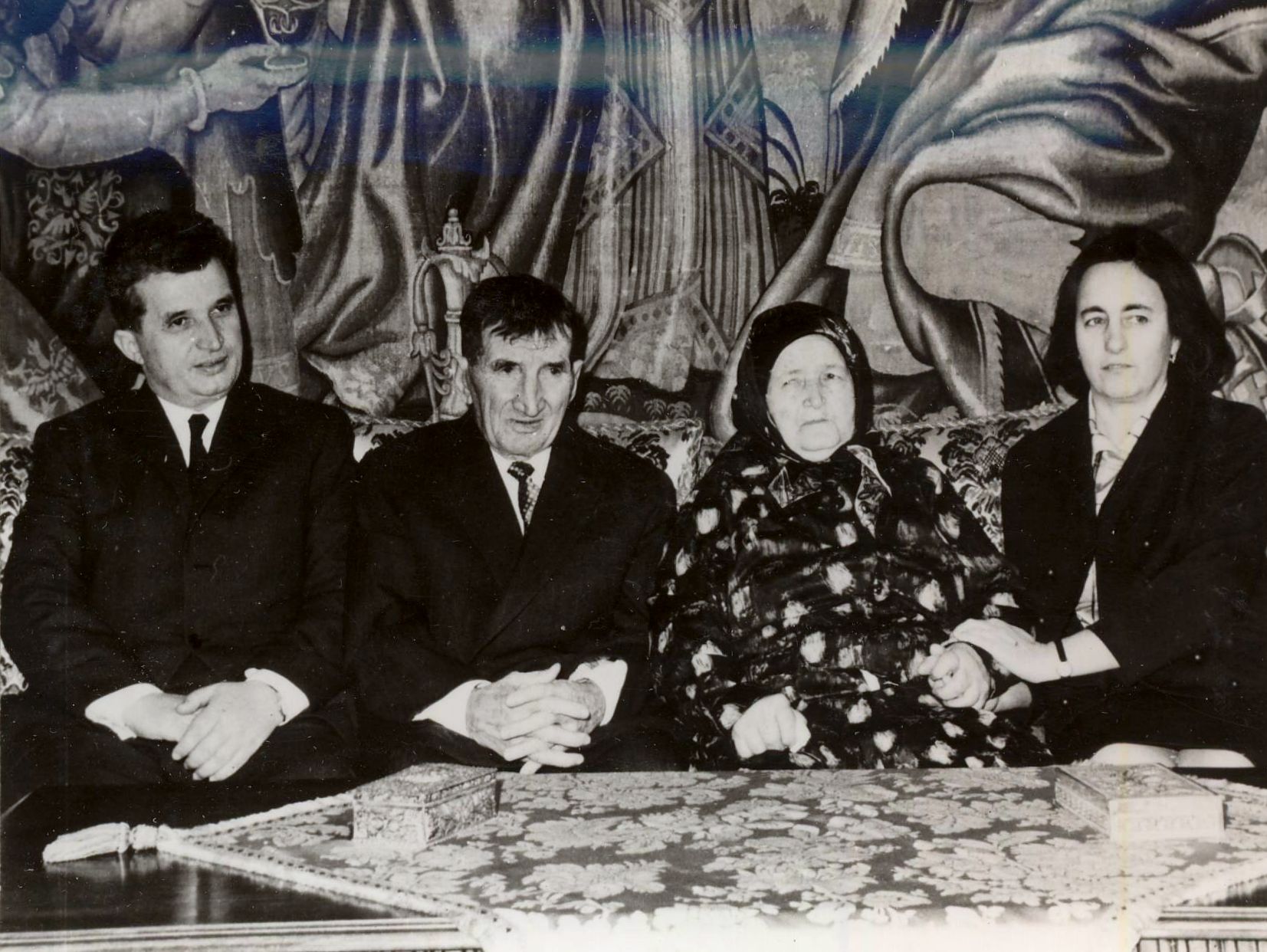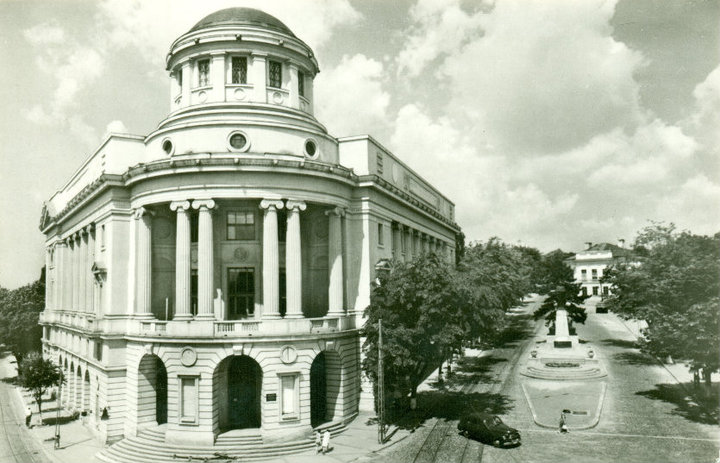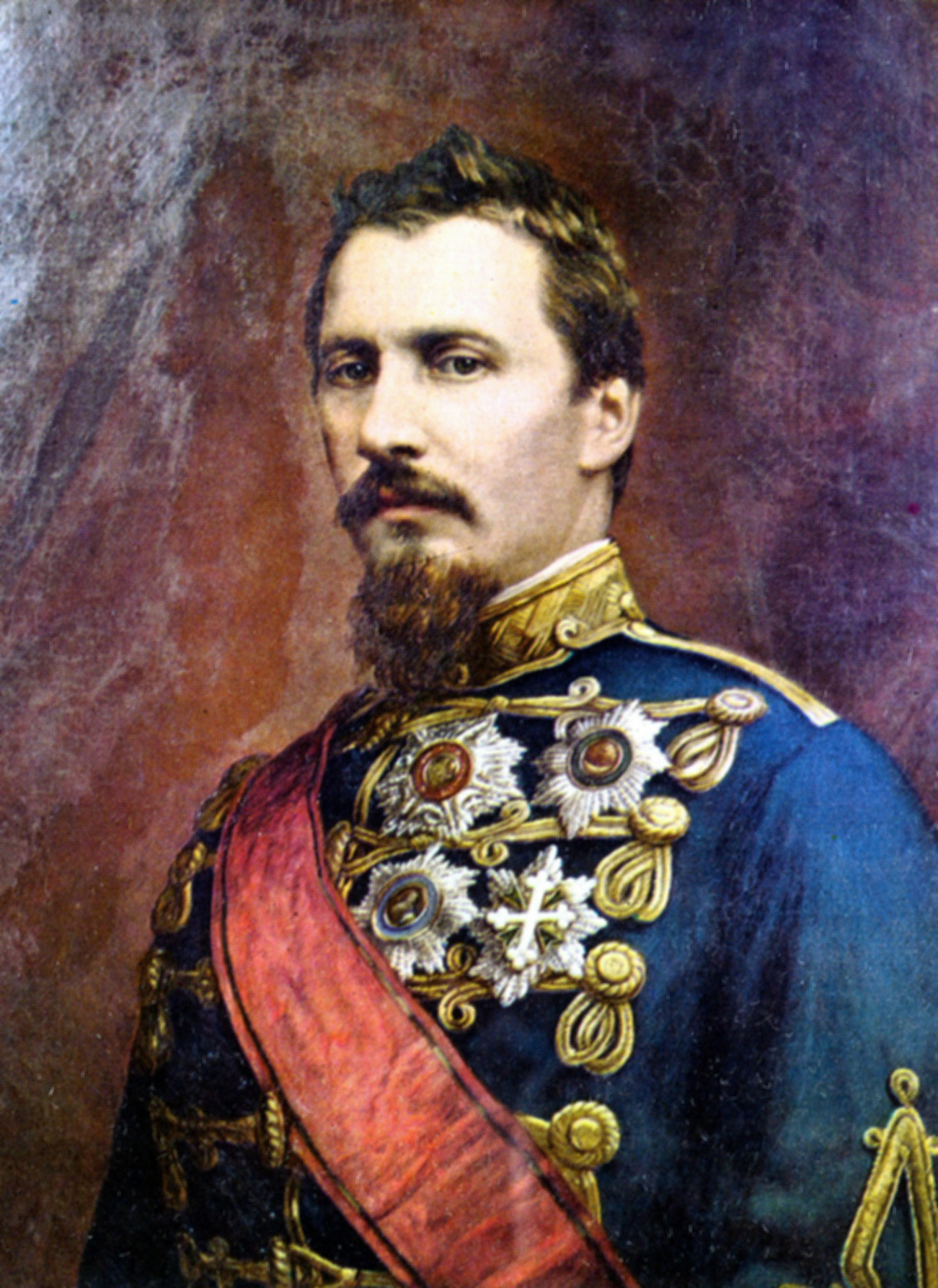|
Sabin Bălașa
Sabin Bălașa (; June 17, 1932 – April 1, 2008) was a contemporary Romanian painter. His works were described by himself as belonging to cosmic Romanticism. Biography Bălașa was born in Dobriceni, Olt County. After completing his secondary education at Frații Buzești High School in Craiova in 1950, he attended the Nicolae Grigorescu Fine Arts Institute in Bucharest, graduating in 1955. He continued his studies at Siena and Perugia, in Italy. In 1973 and 1976 the Bucharest Mayor's office ordered and paid him to paint the portraits of Nicolae and Elena Ceaușescu. In the late 1980s, Bălașa was accused of promoting Ceaușescu's cult of personality. In December 2000 he was awarded by President Emil Constantinescu the National Order of Merit, Commander rank. In June 2005, Bălașa sued the French newspaper ''Le Monde'' for defamation after the paper reproduced a propaganda painting by another painter, claiming it was one of his. Le Monde subsequently acknowledged ... [...More Info...] [...Related Items...] OR: [Wikipedia] [Google] [Baidu] |
Iancu Jianu, Olt
Iancu Jianu is a commune in Olt County, Oltenia, Romania, named after the 19th century Wallachian hajduk Iancu Jianu. It is composed of three villages: Dobriceni, Iancu Jianu, and Preotești. Natives * Sabin Bălașa (1932–2008), painter *Florin Popescu Florin Popescu (born 30 August 1974 in Iancu Jianu, Olt) is a Romanian sprint canoer who competed from the mid-1990s to 2005. Competing in two Summer Olympics, he won two Olympic medals at Sydney in 2000 with teammate Mitică Pricop (gold: C-2 ... (born 1974), sprint canoer References Communes in Olt County Localities in Oltenia {{Olt-geo-stub ... [...More Info...] [...Related Items...] OR: [Wikipedia] [Google] [Baidu] |
Elena Ceaușescu
Elena Ceaușescu (; ; 7 January 1916 – 25 December 1989) was a Romanian communist politician who was the wife of Nicolae Ceaușescu, General Secretary of the Romanian Communist Party and leader of the Socialist Republic of Romania. She was also the Deputy Prime Minister of Romania. Background She was born Lenuța Petrescu into a peasant family in Petrești commune, Dâmbovița County, in the historical region of Wallachia. Her father worked as a ploughman. She was able to acquire only an elementary school level education. After elementary school, she moved along with her brother to Bucharest, where she worked as a laboratory assistant before finding employment in a textile factory. She joined the Bucharest branch of the Romanian Communist Party in 1939 and met 21-year-old Nicolae Ceaușescu. Ceaușescu was instantly attracted to her which, reportedly, made him never look at another woman in a romantic manner. Their relationship was interrupted by Ceaușescu's frequent stints in ... [...More Info...] [...Related Items...] OR: [Wikipedia] [Google] [Baidu] |
Luceafărul (poem)
''Luceafărul'' (originally spelled ''Luceafĕrul'' ; variously rendered as "The Morning Star", "The Evening Star", "The Vesper", "The Daystar", or "Lucifer") is a narrative poem by Romanian author Mihai Eminescu. It was first published in 1883, out of Vienna, by Romanian expatriates in Austria-Hungary. It is generally considered Eminescu's masterpiece, one of the greatest accomplishments in Romanian literature, and one of the last milestones in Europe's romantic poetry. One in a family or "constellation" of poems, it took Eminescu ten years to conceive, its final shape being partly edited by the philosopher Titu Maiorescu. During this creative process, Eminescu distilled Romanian folklore, Romantic themes, and various staples of Indo-European myth, arriving from a versified fairy tale to a mythopoeia, a self-reflection on his condition as a genius, and an illustration of his philosophy of love. The eponymous celestial being, also referred to as " Hyperion", is widely identified ... [...More Info...] [...Related Items...] OR: [Wikipedia] [Google] [Baidu] |
Statue Of Mihai Eminescu, Iași
A statue of Mihai Eminescu in Iași, Romania, is located at 2 Carol I Boulevard, in front of the Central University Library of Iași. Background In 1924, the Popular Athenaeum of the Toma Cozma Church began raising funds for a statue of poet Mihai Eminescu. After collecting 1.5 million Romanian leu, lei, a committee was formed to choose a design. Two competitions held in 1927 failed to produce a finalist, despite receiving entries from accomplished artists. A third attempt, held in 1928 under the leadership of Mihail Sadoveanu, resulted in the selection of Czech-Romanian sculptor Ion Schmidt-Faur‘s model. Completed in late 1928, the statue was unveiled in 1929, the 40th anniversary of Eminescu’s death.Iftimi, pp. 537-38 The work was originally placed at the entrance to the University of Iași, where a statue of Alexandru Dimitrie Xenopol now stands. Artistically, the result is not considered out of the ordinary. It has been suggested that the poet’s overwhelming character inh ... [...More Info...] [...Related Items...] OR: [Wikipedia] [Google] [Baidu] |
Mihai Eminescu
Mihai Eminescu (; born Mihail Eminovici; 15 January 1850 – 15 June 1889) was a Romanian Romantic poet from Moldavia, novelist, and journalist, generally regarded as the most famous and influential Romanian poet. Eminescu was an active member of the Junimea literary society and worked as an editor for the newspaper ''Timpul'' ("The Time"), the official newspaper of the Conservative Party (1880–1918). His poetry was first published when he was 16 and he went to Vienna, Austria to study when he was 19. The poet's manuscripts, containing 46 volumes and approximately 14,000 pages, were offered by Titu Maiorescu as a gift to the Romanian Academy during the meeting that was held on 25 January 1902. Notable works include '' Luceafărul'' (''The Vesper/The Evening Star/The Lucifer/The Daystar''), ''Odă în metru antic'' (''Ode in Ancient Meter''), and the five ''Letters'' (''Epistles/Satires''). In his poems, he frequently used metaphysical, mythological and historical subjects. H ... [...More Info...] [...Related Items...] OR: [Wikipedia] [Google] [Baidu] |
Alexandru Ioan Cuza University
The Alexandru Ioan Cuza University (Romanian: ''Universitatea „Alexandru Ioan Cuza"''; acronym: UAIC) is a public university located in Iași, Romania. Founded by an 1860 decree of Prince Alexandru Ioan Cuza, under whom the former Academia Mihăileană was converted to a university, the University of Iași, as it was named at first, is one of the oldest universities of Romania, and one of its advanced research and education institutions. It is one of the five members of the ''Universitaria Consortium'' (the group of elite Romanian universities). The Alexandru Ioan Cuza University offers study programmes in Romanian, English, and French. In 2008, for the third year in a row, it was placed first in the national research ranking compiled on the basis of Shanghai criteria. In the 2012 QS World University Rankings, Alexandru Ioan Cuza University was included in the Top 700 universities of the world, on the position 601+ , together with three other Romanian universities. The univers ... [...More Info...] [...Related Items...] OR: [Wikipedia] [Google] [Baidu] |
Fresco
Fresco (plural ''frescos'' or ''frescoes'') is a technique of mural painting executed upon freshly laid ("wet") lime plaster. Water is used as the vehicle for the dry-powder pigment to merge with the plaster, and with the setting of the plaster, the painting becomes an integral part of the wall. The word ''fresco'' ( it, affresco) is derived from the Italian adjective ''fresco'' meaning "fresh", and may thus be contrasted with fresco-secco or secco mural painting techniques, which are applied to dried plaster, to supplement painting in fresco. The fresco technique has been employed since antiquity and is closely associated with Italian Renaissance painting. The word ''fresco'' is commonly and inaccurately used in English to refer to any wall painting regardless of the plaster technology or binding medium. This, in part, contributes to a misconception that the most geographically and temporally common wall painting technology was the painting into wet lime plaster. Even in appar ... [...More Info...] [...Related Items...] OR: [Wikipedia] [Google] [Baidu] |
Sala Pasilor Pierduti (lucrari Apartinand Lui Sabin Balasa), Universitatea Al
Sala or SALA may refer to: Places Europe * Sala, the historical name of the river IJssel and home of the Salii Franks * Sala (Estonian island), one of the Uhtju islands * Sala Baganza, a municipality in Emilia-Romagna, Italy * Sala Bolognese, a municipality in Emilia-Romagna, Italy * Sala Consilina, a municipality in Campania, Italy * Sala Municipality, Latvia, a municipality in Latvia * Sala, Sala Parish, a village in Latvia, an administrative centre of Sala municipality * Šaľa, Slovakia, a city in Slovakia * Sala Municipality, Sweden, a municipality in Sweden * Sala, Sweden, a city in Sweden, seat of Sala Municipality * Sala Parish (other), parishes (''socken'') in Sweden Africa * Salé ( ber, Sala, link=no), Morocco * Sala, an ancient city at Rabat, Morocco * Sala, Houet, a village in Satiri Department, Houet Province, Burkina Faso * Sala, Ziro, a village in Ziro Province, Burkina Faso * Sala Colonia, a Phoenician and Roman colony whose ruins are located in ... [...More Info...] [...Related Items...] OR: [Wikipedia] [Google] [Baidu] |
HotNews
HotNews is one of the oldest and biggest Romanian news sites focused mainly on general topics, finance, politics, and current affairs. The website constantly publishes news, interviews, video documentaries, and opinion pieces. As of February 2019, the site has around 250,000–300,000 unique users daily, more than 3 million monthly unique visitors, and around 30 million monthly page views, according to stats measured by the Romanian BRAT/SATI. The website was founded in October 1999 by a group of financial journalists under the name ''RevistaPresei.ro'' and contained articles from outside sources put together as a press review. It was rebranded as HotNews.ro in 2005. Located in Bucharest, the company employed more than 30 journalists in 2018. Its advertising sales for 2007 stood between €600,000 and €700,000. [...More Info...] [...Related Items...] OR: [Wikipedia] [Google] [Baidu] |
Lung Cancer
Lung cancer, also known as lung carcinoma (since about 98–99% of all lung cancers are carcinomas), is a malignant lung tumor characterized by uncontrolled cell growth in tissue (biology), tissues of the lung. Lung carcinomas derive from transformed, malignant cells that originate as epithelial cells, or from tissues composed of epithelial cells. Other lung cancers, such as the rare sarcomas of the lung, are generated by the malignant transformation of connective tissues (i.e. nerve, fat, muscle, bone), which arise from mesenchymal cells. Lymphomas and melanomas (from lymphoid and melanocyte cell lineages) can also rarely result in lung cancer. In time, this uncontrolled neoplasm, growth can metastasis, metastasize (spreading beyond the lung) either by direct extension, by entering the lymphatic circulation, or via hematogenous, bloodborne spread – into nearby tissue or other, more distant parts of the body. Most cancers that originate from within the lungs, known as primary ... [...More Info...] [...Related Items...] OR: [Wikipedia] [Google] [Baidu] |
Le Monde
''Le Monde'' (; ) is a French daily afternoon newspaper. It is the main publication of Le Monde Group and reported an average circulation of 323,039 copies per issue in 2009, about 40,000 of which were sold abroad. It has had its own website since 19 December 1995, and is often the only French newspaper easily obtainable in non-French-speaking countries. It is considered one of the French newspapers of record, along with '' Libération'', and ''Le Figaro''. It should not be confused with the monthly publication '' Le Monde diplomatique'', of which ''Le Monde'' has 51% ownership, but which is editorially independent. A Reuters Institute poll in 2021 in France found that "''Le Monde'' is the most trusted national newspaper". ''Le Monde'' was founded by Hubert Beuve-Méry at the request of Charles de Gaulle (as Chairman of the Provisional Government of the French Republic) on 19 December 1944, shortly after the Liberation of Paris, and published continuously since its first edit ... [...More Info...] [...Related Items...] OR: [Wikipedia] [Google] [Baidu] |
Monitorul Oficial
''Monitorul Oficial al României'' is the official gazette of Romania, in which all the promulgated bills, presidential decrees, governmental A government is the system or group of people governing an organized community, generally a state. In the case of its broad associative definition, government normally consists of legislature, executive, and judiciary. Government is a ... ordinances and other major legal acts are published. External links * The Official Gazette of Romania – Tradition and Present StatusLegislatia Romaniei si U.E.Official Gazette listing 2005 - 2007Collection of editions from 1875 to 1949 {{Newspapers in Romanian Government of Romania Newspapers published in Romania Government gazettes Publications established in 1832 ... [...More Info...] [...Related Items...] OR: [Wikipedia] [Google] [Baidu] |





.jpg)


